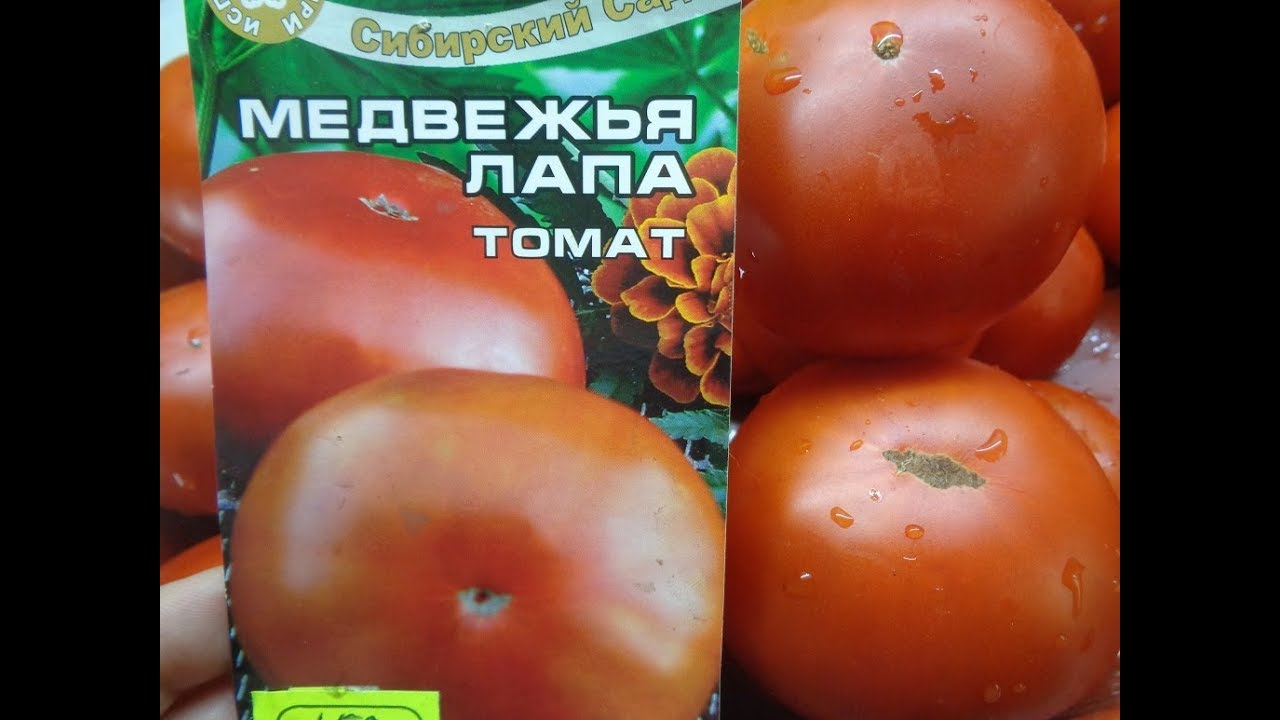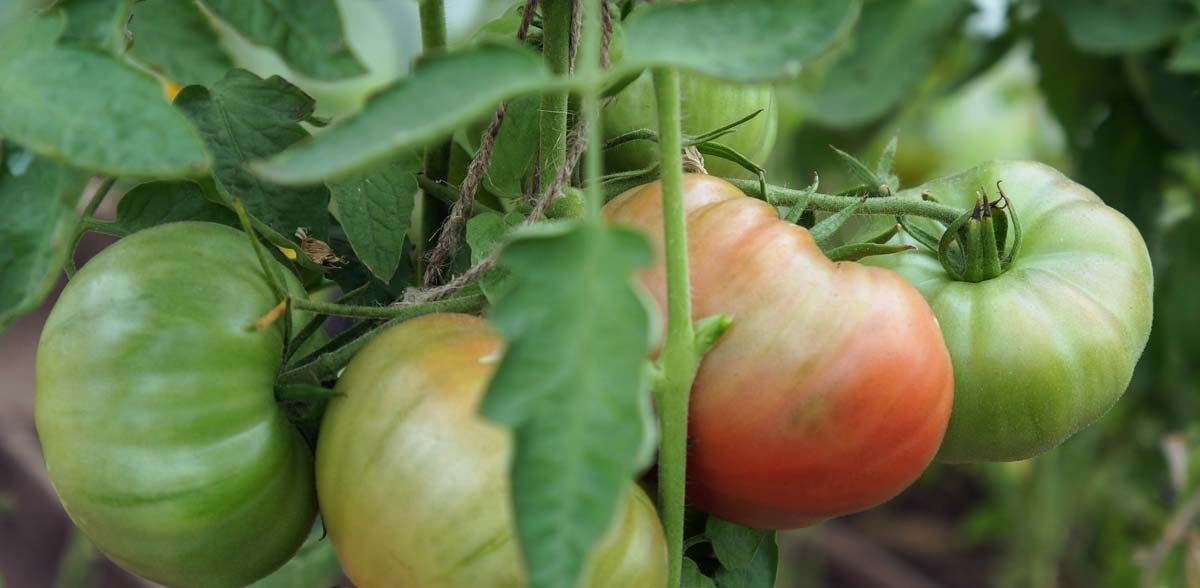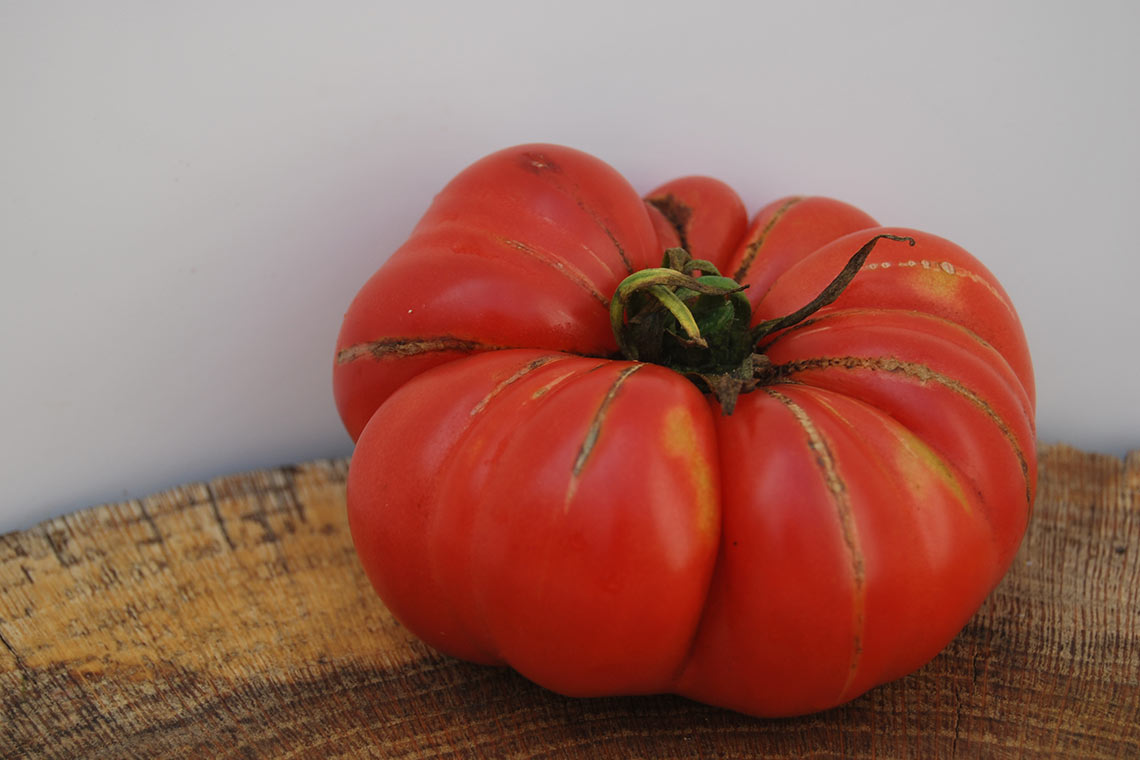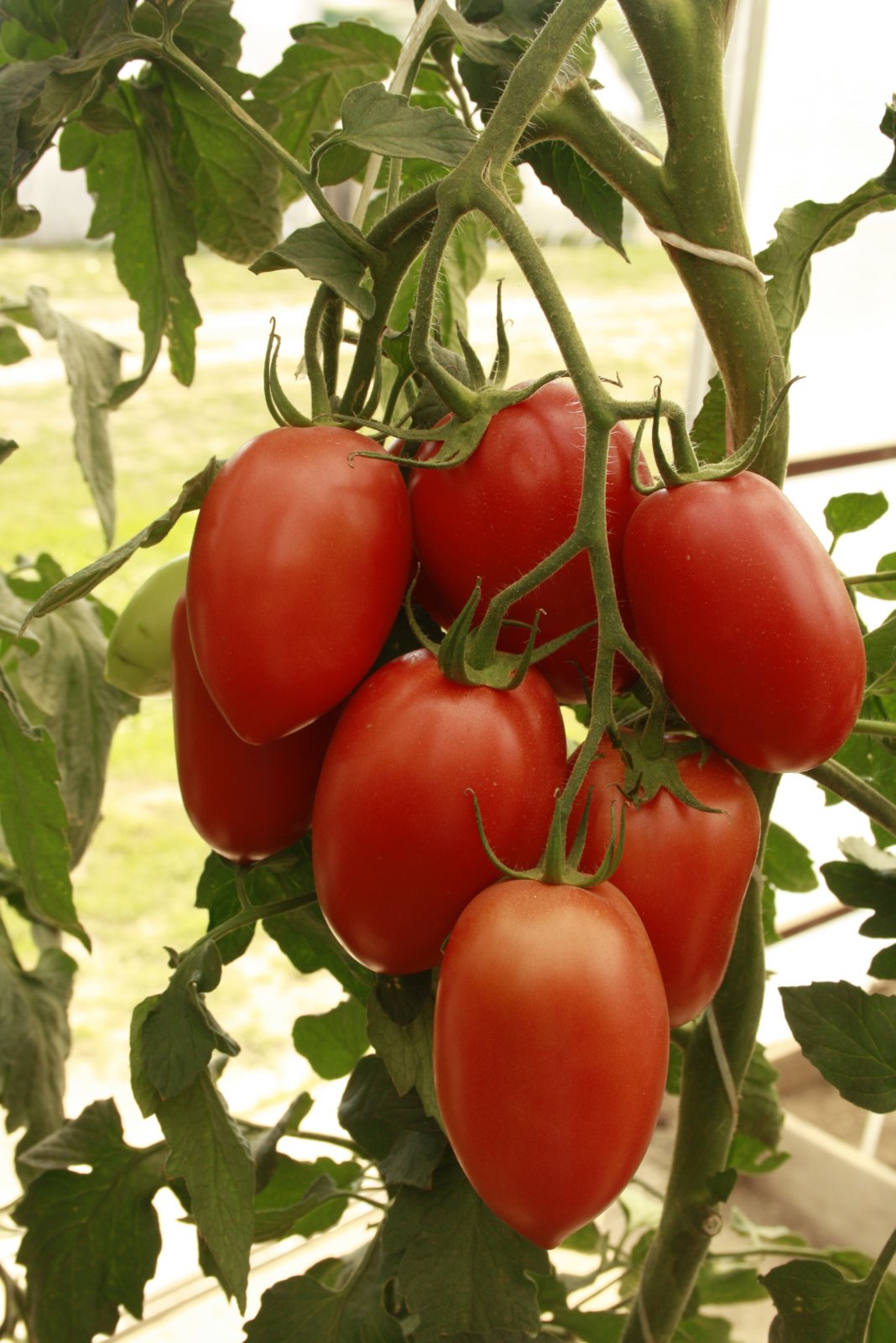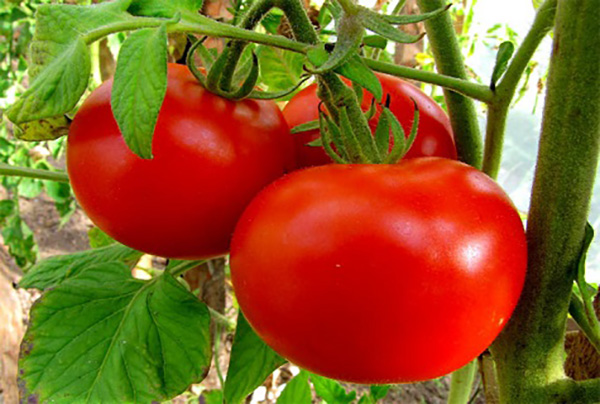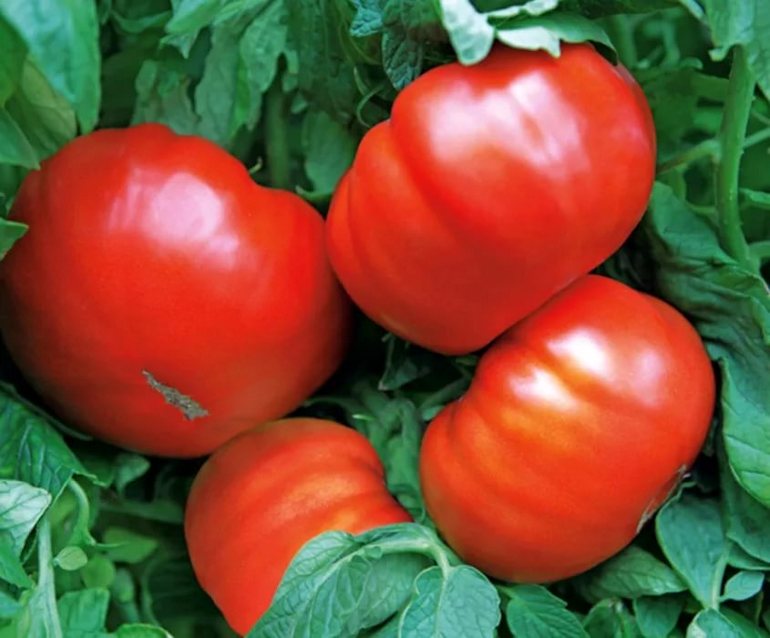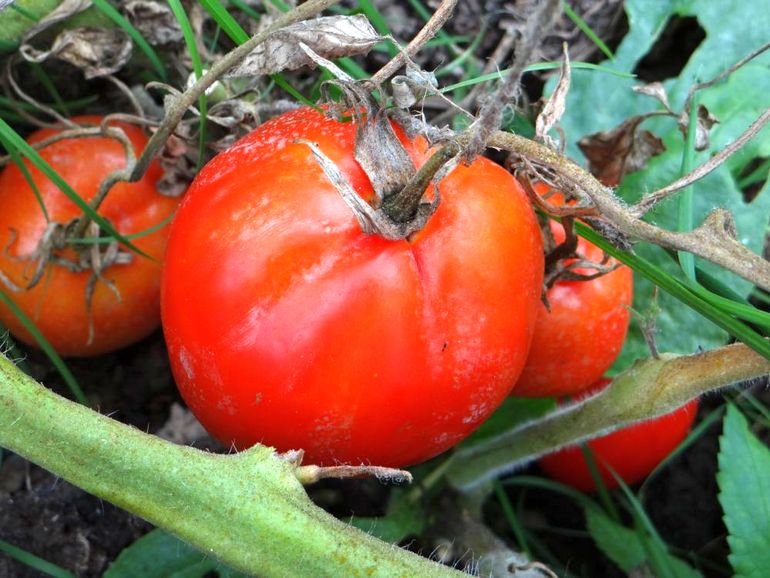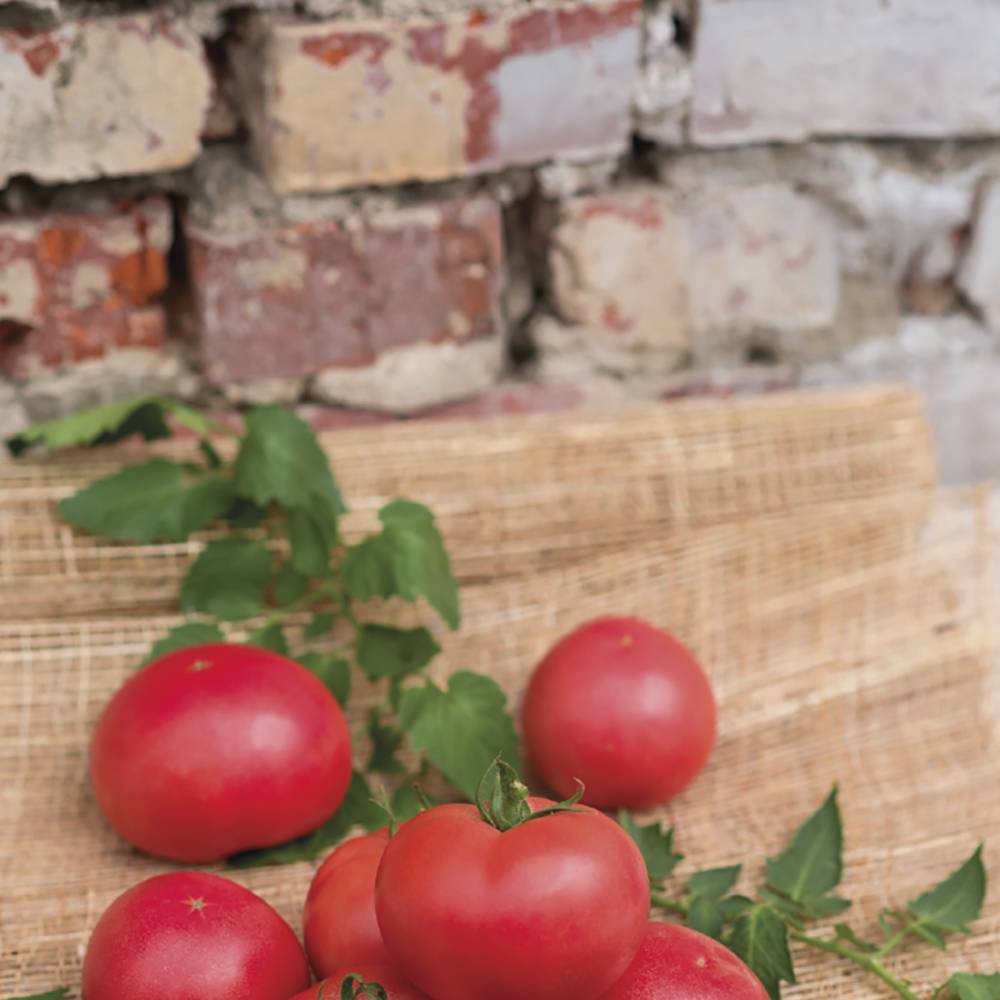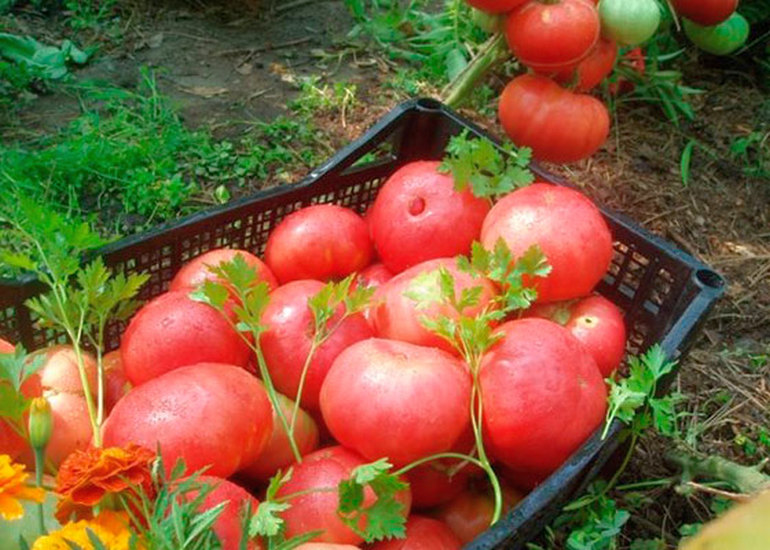Content:
Familiar to most gardeners, Bear's Paw tomato is especially attractive for lovers of fresh squeezed tomato juice, as well as juicy and ripe tomatoes. This variety belongs to the category of amateur crops, according to its "working" characteristics it is quite suitable for cultivation in regions with a temperate climate. Amateur gardeners prefer this variety of tomatoes also because in mature form they are quite impressive in size, and are also completely unpretentious to the quality of care during the growing season.
general information
This variety got its real name because of the unusual shape of the fruit, vaguely resembling a bear's paw or ear. Its exact origin has not yet been established, but, according to a number of experts, it was the result of the research activities of single amateur breeders.
All gardeners unanimously note the power and spreading of the Bear's Ushko tomato bushes. It is noted that when grown in a greenhouse, the plant reaches a height of 2 meters. According to the characteristics of the growing season, it belongs to the category of indeterminate varieties, in order to limit the growth of which, pinching is done at a certain point of the stem.
If tomatoes are grown in unprotected soil, the maximum height of the bushes rarely exceeds 1.5 meters, the seedlings prepared for planting are distinguished by their strong appearance and rich green color. In grown plants, the color of the tops darkens a little, and its foliage becomes much thicker.
This type of tomato belongs to mid-late crops, since the time of their final ripening occurs approximately 110-115 days after planting. In a mature state, tomatoes are distinguished by their originality of their shape slightly flattened on both sides and a dark red tint. Some amateur gardeners, when trying to describe this hybrid during the harvest period, compare it with the famous Gypsy tomato variety.
Specifications
Distinctive features of the bear's paw tomato with the characteristics and description of the variety which can be found below are:
- The shape is flat-round; at the same time, a pronounced ribbing is observed near the peduncle.
- In mature form, the weight of one tomato can reach 800 grams.
- When ripe, the color of its glossy skin changes from green to dark red.
- The pulp of the fruits of this variety is quite juicy (fleshy) and has a pleasant taste with a slight sourness.
In order to adequately describe the characteristics and appearance of tomatoes of the Medved variety, it should be added that the number of tomatoes ripening on one brush usually does not exceed 3-4 pieces.
In particularly successful years, it is possible to collect up to 30 kg of ripe and juicy tomato fruits from a plant bush, which allows this crop to be classified as high-yielding. The process of gradual ripening of the bear's paw fruit usually stretches over the entire season. After harvest, it can be used both fresh and as an additive in salads, sauces, soups, and also main courses.For domestic canning, tomatoes are ideal for making juices, purees and concentrated pasta.
Features of agricultural technology
Preparatory procedures
The variety considered in the review can be grown both by transferring seedlings to unprotected soil, and by growing it under a film or under a polycarbonate cover (in a greenhouse). The latter option for planting tomatoes is practiced in areas with moderately cold temperature conditions.
The soil in the beds is prepared for planting in advance, for which it is mixed with humus in equal proportions.
Even before transplanting into the ground, you will need to grow healthy seedlings, planted with seeds at the very beginning of spring (somewhere in March).
When landing it, you must adhere to the following rules:
- Approximately 24 hours before the start of excavation, the carefully selected seeds are soaked in warm water to help them germinate better in the future.
- Then the prepared earthen mixture is poured into small containers up to 15 cm high.
- After that, furrows are made on the surface of the well-mixed earth, about 1 cm deep.
Seeds for seedlings are placed in them with a step of about 2 cm, after which they are sprinkled with earth on top and spilled abundantly. Then these boxes or containers are placed for a while in a dark and warm place, where they are covered with a film (glass). The best germination capacity of newly planted seedlings is observed at temperatures of the order of 25-30 degrees.
After the first shoots appear, the boxes are moved closer to the light (on the windowsill, for example). Well-settled warm water is used to water the germinating seedlings.
Transfer
In greenhouse conditions, seedlings of a tomato bear's paw should be planted at the age of 1.5-2 months, that is, by the time it grows to 25 cm, and 5-6 leaves appear on the sprouts.
The top layer of soil, in which other varieties were previously grown, should be replaced with new soil, which will avoid damage by pathogenic microbes preserved in it.
As a result, it should be loose and have a good permeability index.
Tall seedlings are planted in small-sized holes made in the ground, with a step of about 60 cm, in a checkerboard pattern. This planting scheme greatly simplifies the care of the sprouts, providing the necessary space for the growth of the root system.
In the case of transfer to unprotected soil, the latter is dug up in the fall and fertilized with compost. At the same time, beds on which eggplants or bell peppers were previously bred should not be selected as a place for growing seedling bushes. Planting is allowed in garden plots where any other crops used to grow (garlic, onions, cucumbers, cabbage or legumes).
Care (watering, feeding)
Proper care of this type of tomato comes down to the following mandatory procedures:
· Regular watering and fertilization.
· Timely formation of the bush (pinching it).
· Tying the stem.
This variety needs constant, but relatively moderate watering (excess moisture can cause the spread of fungal diseases).
During the fruiting period, the volume of introduced moisture is sharply reduced, which avoids the formation of cracks on their skin.For the first time, fertilizing in the form of minerals or folk remedies is applied under the bushes about a week after planting the seedlings. Subsequent fertilization is carried out no earlier than 2 weeks later.
When choosing a top dressing, preference is given to potassium or phosphorus minerals introduced in dissolved form. To prepare them, about 30 grams of superphosphate (potassium sulfate) are mixed in 10 liters of water.
The tomato bush itself. Bear's paw is usually formed into one (less often - into two) stems. In this case, the lower row of leaves and the side shoots located nearby are completely cut off in order to prevent the formation of excess green mass.
Since this variety belongs to tall crops, the tops of the bushes should be tied to an additional support (wooden stick or rail). A complex structure consisting of a whole set of racks can be used as a supporting structure.
A string or wire is usually pulled between the posts to support the heavy branches of the bushy plant.
Advantages and disadvantages
The indisputable advantages of the variety include:
- Sufficiently high yield.
- Resistance to drying out of the soil (drought), as well as increased immunity to major garden diseases.
- The versatility of this class of tomatoes.
- Juicy pulp and pleasant taste.
- Good transportability of the finished fruit, allowing for commercial cultivation.
The disadvantage of this type of tomato is one - they need constant pruning of the growing bushes.
In the final part of the review of this species, we note that its breeding can be carried out in the central regions of the country of Russia, without fear of possible frosts and severe drought. The "bear" size of the fruits of this crop guarantees gardeners a bountiful harvest and substantial reserves of pickles and marinades for the winter.
